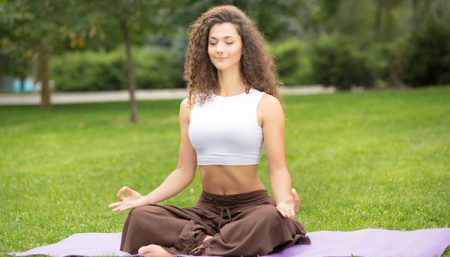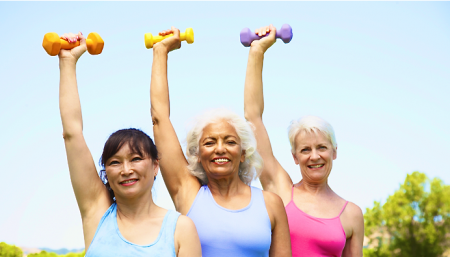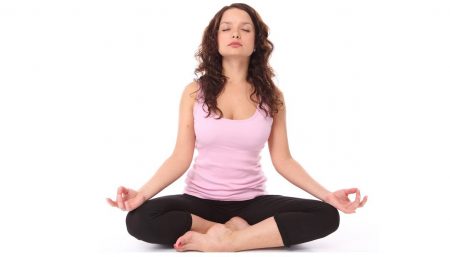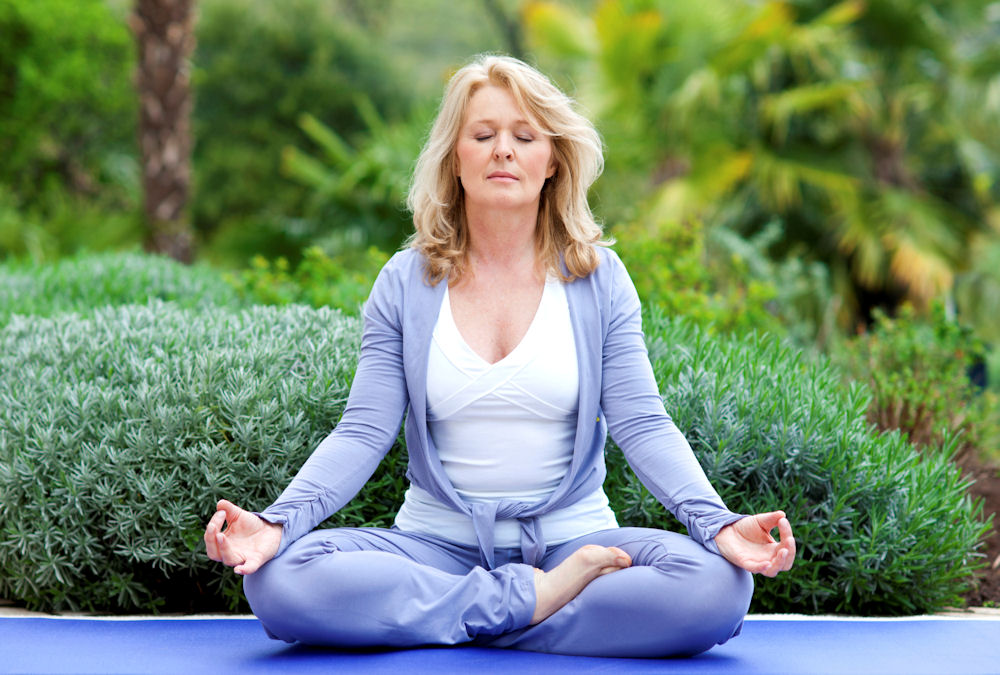
With age, the efficiency of the body and immunity level deteriorates, bringing on the possibility of various diseases. Regular practice of yoga, such as asanas, pranayama and meditation can help to avoid various health conditions, remove the misery, and help in leading a happier and fulfilling life.
- Better Sleep Pattern: Older adults (60+) are often plagued with difficulty falling asleep and staying asleep. The result is a fragmented, poor night’s sleep which reduces daytime alertness. A recent study compared the impact of Yoga, including physical postures, relaxation techniques, and voluntary regulated breathing, and Ayurveda (an herbal preparation) on sleep in the geriatric population (Manjunath, Telles, 2005). Sixty-nine seniors living in the same residence were stratified based on age and were randomly assigned to three groups: Yoga, Ayurveda and Wait-list (no intervention of any sort). The groups’ sleep patterns were evaluated via self-assessment over a one-week period prior to the intervention and after three and six months of their respective interventions. The results were enlightening. The Yoga group showed a significant decrease in the time it took to fall asleep (an approximate average decrease of ten minutes) and an increase in the total number of hours slept (an approximate increase of 60 minutes). The other two trial groups showed no significant change in sleep. The study’s conclusion was that Yoga practice improved quantity and quality of sleep among the geriatric population.
- Strength/Arthritis: A study was conducted that measured improvement in hand grip in rheumatoid arthritis patients versus non-arthritic volunteers following Yoga training (Dash, Telles, 2001). The results were significant. Hand grip strength in both hands (measured with a grip dynamometer) increased in non-arthritic adults and children AND in rheumatoid arthritis patients following Yoga. Hand strength did not improve among the corresponding control groups.
- Diabetes: A study at the University College of Medical Sciences in New Delhi evaluated 30-to-60 year old patients with Type II diabetes (Jain, Uppal, Bhatnagar, Talukdar, 1993). A 40-minute-per-day regimen of Yoga was followed for a period of 40 days. The results showed a significant decrease in fasting blood sugar levels. Furthermore, these patients showed an average improvement in lung capacity of approximately 10 percent. This suggests that, over time, Type II diabetics can achieve better blood sugar control and pulmonary functions when they follow a daily Yoga regimen.
- Hypertension: Researchers at Bhabha Atomic Research Centre, Medical Division, in Mumbai (formerly known as Bombay), India, evaluated the overall benefits of Yoga on risk factors for heart disease (Damodaran, Malathi, Patil, Shah, Suryavansihi, Marathe, 2002). A group of 20 patients, 35 to 55 years of age, all of whom had mild to moderate high blood pressure, began a daily one-hour Yoga program. Prior to the implementation of their Yoga program and following three months of Yoga, biochemical and psychological parameters were studied. The overall results were quite impressive. After three months of Yoga practice, the patients experienced a decrease in blood pressure, as well as a decrease in blood sugar, cholesterol and triglycerides. Feedback also indicated that the patients were calmer.
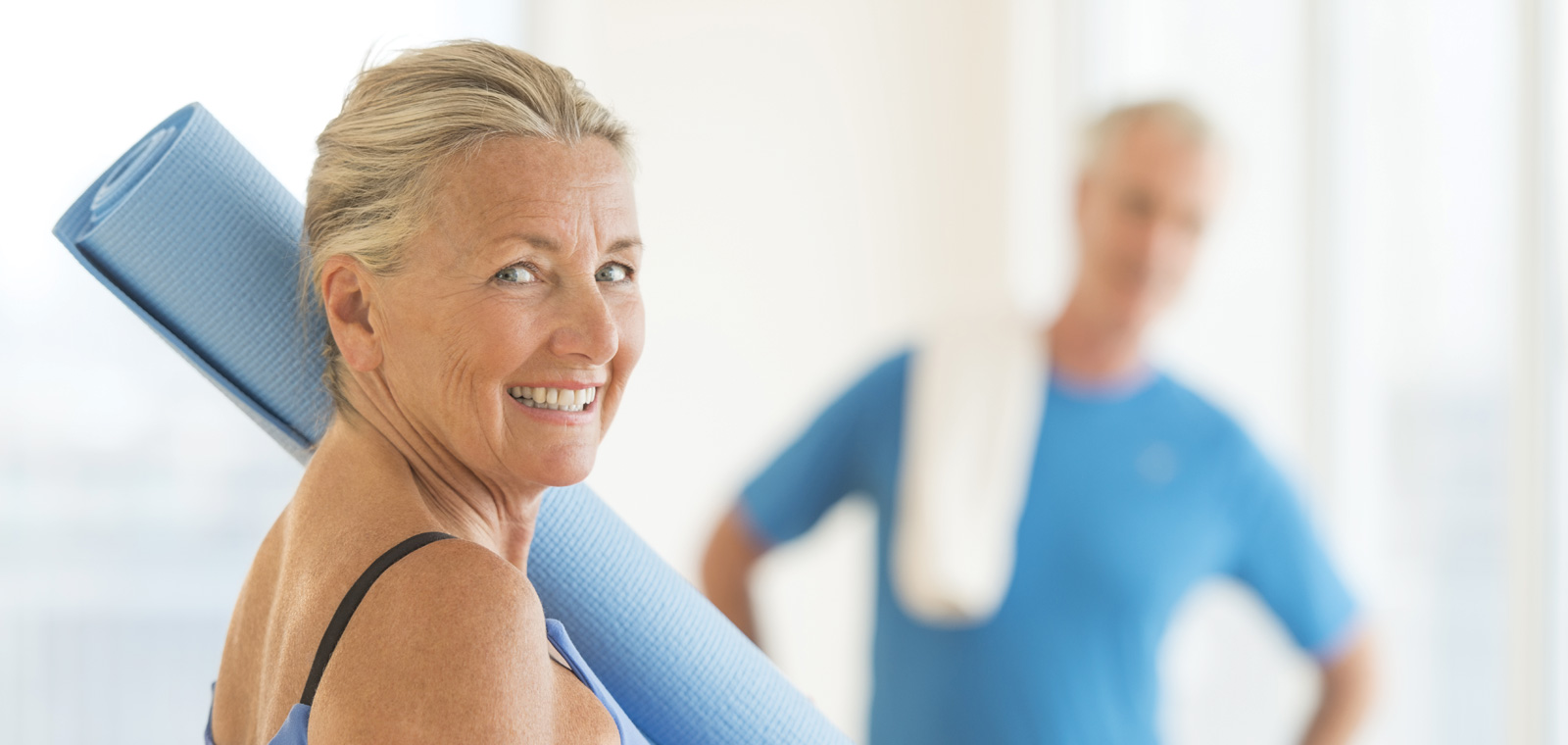
- Middle-age Weight: Recent research found that practicing Yoga regularly for at least half an hour per week may help offset middle-age weight gain (Kristal et al, 2005). It is estimated that people typically gain about one pound per year between the ages of 45 and 55. Researchers at Fred Hutchinson Cancer Research Center found that weight gain in those who practiced Yoga weekly for at least four years had a 3.1 pound reduction in expected weight gain.
- Mood/Anxiety: The Harbor-UCLA Medical Center conducted a study to assess what effect, if any, Yoga has on stress levels (Gaur, 2001). During the study, all participants expressed that their moods and anxiety levels were improved as a result of their Yoga sessions. Yoga boosts levels of the brain chemical GABA, which helps calm nerves.
- Chronic Pain: Yoga practice has been shown to aid those suffering with chronic pain. A study by the Harbor-UCLA Medical Center (Gaur, 2001) found that patients experiencing chronic pain either improved or maintained their symptoms after only four weeks of practicing Yoga. No patients experienced deterioration, and every patient significantly reduced the amount of needed pain medication. Many people speculate that any form of group activity, be it Yoga or otherwise, is mood-elevating for seniors as they may be living alone and/or have limited social interaction due to physical limitations. The social aspect of attending a group exercise class, as any instructor who works with seniors will tell you, is invaluable. The contact group provides a sense of belonging.
- Lung Problems/Breathing Difficulties: Breathing difficulties in 86 bronchial asthmatics were treated by a Yoga-chair breathing procedure composed of simple neck muscle relaxation movements and postures (or “asanas”) with breathing exercises (Nagarathna, Nagendra, Seethalakshmi, 1991). Seventy percent of the episodes were relieved within approximately 30 minutes. The patients gained confidence in this breathing technique and used it before resorting to prescription medication. Reduced anxiety worked well toward relieving the acute breathing difficulty episodes.
- Enhanced Body Balance: Practicing postures that emphasize standing and balance can help build strength and confidence. About 80 percent of proprioception is in your ankles, so standing poses are important, particularly for people in their 70s.
Suggested Guidelines for Yoga with Active Older Adults:
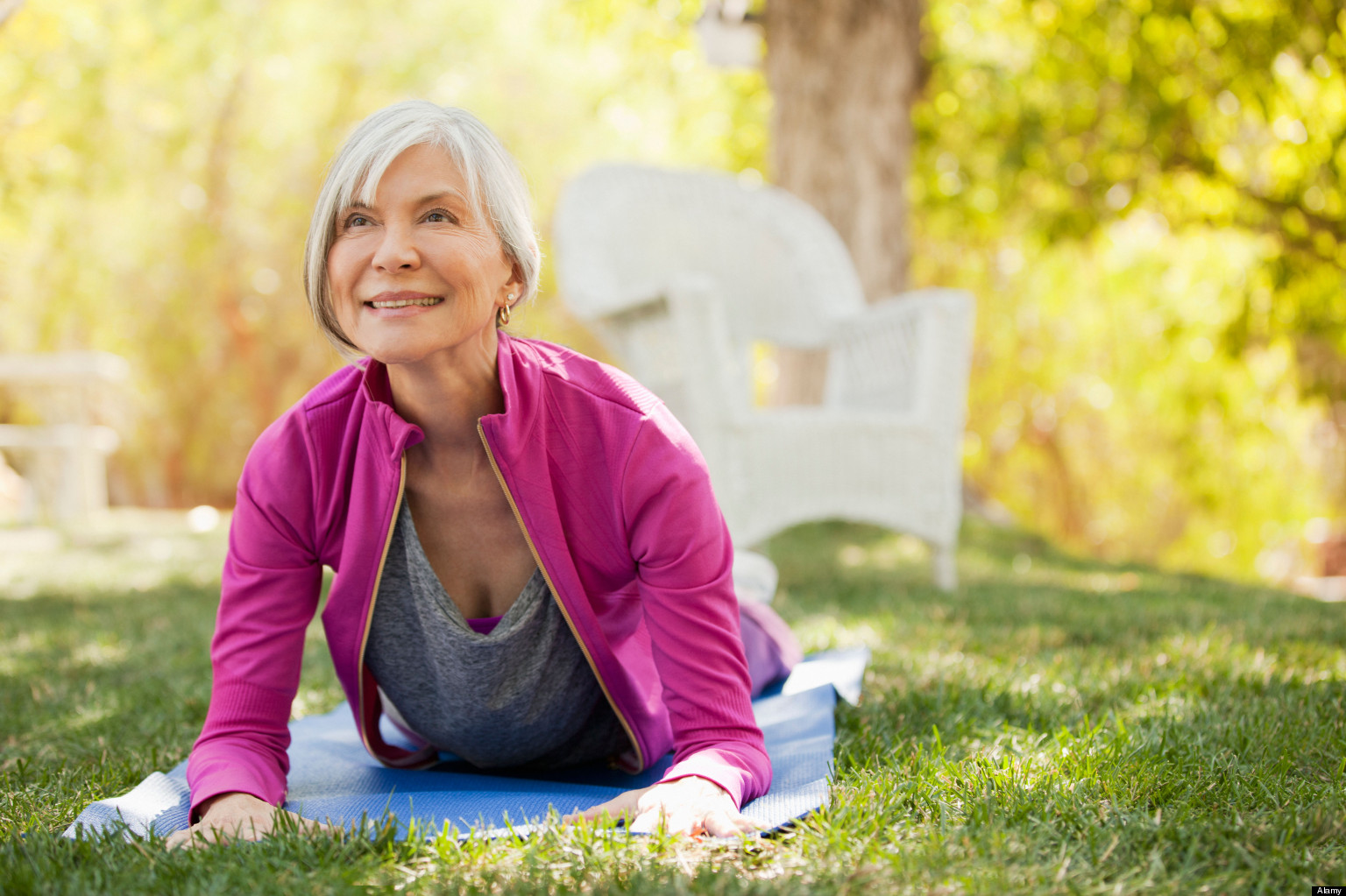
- Be aware of health concerns and ability level for each of your class participants. Keeping class size small, if at all possible, will help you in obtaining, remembering and making use of this information. One of the greatest risks of yoga for seniors may occur among those with compromised bone, since some common postures — such as straight-legged forward bends and end-range twists — can increase the risk of vertebral fractures, says Matthew Taylor, director of the Dynamic Systems Rehabilitation Clinic in Scottsdale, Ariz. “People with osteoporosis should work individually with a yoga instructor who has specialized training until cleared to safely participate in an appropriate group class,” says Taylor, past president of the International Association of Yoga Therapists.
- Always cue body alignment and posture. Also, slow down the transition between poses. This can be accomplished by cueing each pose thoroughly, describing the positioning of each body part. Start the cueing at the top of the body, moving downward.
- Reduce the length of time for which an asana is held. Older participants may not have the strength required to hold the pose for a longer period of time but will gain strength from practicing the pose even for ten or fifteen seconds. The pose can be repeated, if desired.
- Avoid the use of Sanskrit labels for the poses. Use of the English terms is much less intimidating to the participants. Using terminology that participants understand will help them to remember and master the poses.
- Train your participants to focus their gaze in a specific spot to assist with balance. This is especially important with older adults whose balance may be challenged. In rotational poses, advise your senior students to focus their gaze toward the ground or straight ahead rather than upward.
- Whenever you cue the class to stretch one area, cue them also to release tension in another.
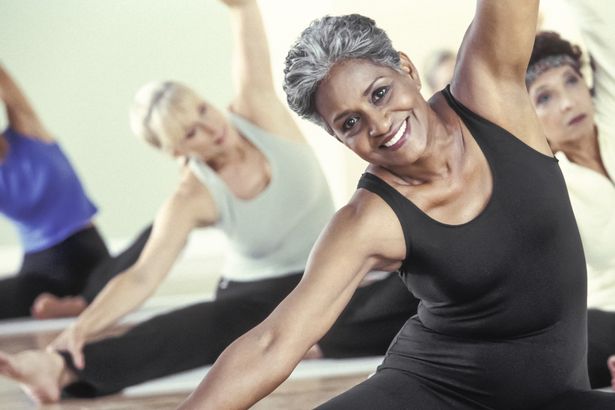
- Focus on the participants’ success. Encourage them and praise their efforts. Create a supportive environment, and the students will want to come back for both the health benefits and the psychological perks.
Offer plenty of options for each pose and be aware of the props you have available to assist with body alignment and balance, as well as to support and protect joints. Don’t be afraid to use unconventional props – water bottles and purses can offer nice support in a forward bend, for example! Keep in mind that seniors often lack physical contact in their lives. Offer them modifications that encourage them to use each other for support and balance, when appropriate, to increase physical contact. - Focus on poses which stretch and strengthen areas which are typically tight or weak in seniors. Ankles, hips, hamstrings, low backs, and pectorals need special attention. Along these lines, be cautious of the weight that they put on their wrists as seniors’ wrists are often weak.
- Avoid complicated poses, but always include at least one pose that is a bit more challenging.
- Maintain proper fitness etiquette at all times.
The number of Yoga participants, both young and old, is continuing to increase as a result of the proven health benefits of this ancient practice. Fitness instructors should respond, in turn, by focusing efforts on learning how to implement Yoga for the health and well-being of the aging population.
Disclaimer
The Content is not intended to be a substitute for professional medical advice, diagnosis, or treatment. Always seek the advice of your physician or other qualified health provider with any questions you may have regarding a medical condition.
